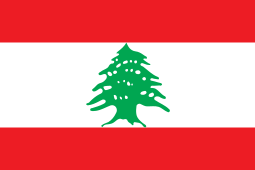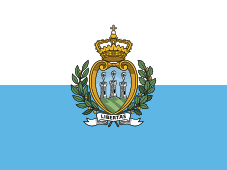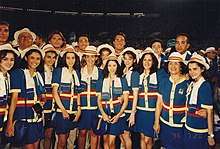1996 Summer Olympics opening ceremony
The opening ceremony of the 1996 Summer Olympics took place in the evening on Friday July 19 at the Centennial Olympic Stadium, Atlanta, United States. As mandated by the Olympic Charter, the proceedings combined the formal and ceremonial opening of this international sporting event, including welcoming speeches, hoisting of the flags and the parade of athletes, with an artistic spectacle to showcase the host nation’s culture and history. The Games were officially opened by President of the United States of America Bill Clinton.
| Date | July 19, 1996 |
|---|---|
| Time | 20:30–00:30 EDT (UTC−4) (4 hours) |
| Venue | Centennial Olympic Stadium |
| Location | Atlanta, Georgia, United States |
| Coordinates | 33°44′08″N 84°23′22″W |
| Also known as | The Centennial World |
| Filmed by | NBC |
| Part of a series on |
|
The Olympic cauldron was lit by former gold medalist and boxing champion Muhammad Ali.[1] The ceremony features Award-winning and Grammy Award-nominated film composer, John Williams, French Canadian singer Celine Dion and American singer Gladys Knight. The ceremony attendance was 85,600.[2] It was watched by an estimated 3.5 billion viewers worldwide.[1]
Dignitaries
The ceremony was attended by many world leaders.
Host nation :

Foreign dignitaries :
.svg.png)





.svg.png)





.svg.png)





.svg.png)

.svg.png)
.svg.png)
.svg.png)


.svg.png)









%3B_Flag_of_Serbia_and_Montenegro_(2003%E2%80%932006).svg.png)
International organizations:
Countdown
The ceremony began with a countdown at the screen coming from 60 to 1. Starting at 22, footage from previous games appeared with Atlanta at the end complete with an image of fireworks with numbers between 22 and 1 being from previous games until 0 from currents games
- 22 - 1896 Athens
- 21 - 1900 Paris
- 20 - 1904 St. Louis
- 19 - 1908 London
- 18 - 1912 Stockholm
- 17 - 1920 Antwerp
- 16 - 1924 Paris
- 15 - 1928 Amsterdam
- 14 - 1932 Los Angeles
- 13 - 1936 Berlin
- 12 - 1948 London
- 11 - 1952 Helsinki
- 10 - 1956 Melbourne
- 9 - 1960 Rome
- 8 - 1964 Tokyo
- 7 - 1968 Mexico City
- 6 - 1972 Munich
- 5 - 1976 Montreal
- 4 - 1980 Moscow
- 3 - 1984 Los Angeles
- 2 - 1988 Seoul
- 1 - 1992 Barcelona
- 0 - 1996 Atlanta
The Call to the Nations
The segment began by airing a flashback from the Barcelona 1992 Summer Olympics closing ceremony in August 1992 which showed International Olympic Committee President Juan Antonio Samaranch inviting the athletes to compete in Atlanta in 1996 before the announcers welcomed the world to the ceremony in French and English.
Spirits then rose from the northwest corner of the stadium in response to the President's invitation. Each of them representing the Olympic colors of Red (Americas), Green (Oceania), Black (Africa), Yellow (Asia), and Blue (Europe) rose to the beat of their own percussion. They summoned tribes out to the stadium floor with their own color and the percussion began to mix. Meanwhile, US Army Paratroopers rappelled down from the stadium roof trailing long colorful papers representing the colors while the tribes formed the Rings of the Olympic flag and the Children of Atlanta, dressed in white, formed the number 100 representing the Centennial of the Olympic Games.
Then the Atlanta Symphony Orchestra, under the direction of famed film composer John Williams, played Summon the Heroes which was the official song of the 1996 Olympics. (This was actually his second piece of music for the Olympics with the first being Olympic Fanfare and Theme from the 1984 games.) As the song started, the children formed a flying dove which is a symbol of the Olympic movement as doves symbolize peace. As the music continued, the five tribes intermingled until there was a huge mixture of humanity at the center of the stadium with the tribes all mingled together as one to symbolize the gathering of nations at the Olympics.
The National Anthem
Following the Call to the Nations, the first official protocol of the ceremony took place. This called for the head of state to make his or her entrance. In this case the head of state was Bill Clinton, the 42nd President of the United States. He was joined by Atlanta Committee for the Olympic Games President Billy Payne and IOC President Juan Antonio Samaranch. After the presentation of colors, the American flag was raised while the Centennial Olympic choir sung the national anthem which was The Star-Spangled Banner. A fly-by from the USAF Thunderbirds concluded the segment.
Welcome to the World
The Artistic portion of the ceremony began and first up was a rousing number called "Welcome to the World." This was an over the top number featuring cheerleaders, marching bands, and steppers. They performed a montage of southern culture in the deep south including the college sporting culture as well as performing an all-American party. The audience also participated as they performed the wave. Assisting the cast were chromed Chevrolet pick-up trucks with spotlights in the beds. The segment ends with a fireworks display.
Georgia on My Mind
Gladys Knight sang "Georgia on My Mind", Georgia's official state song, at the opening ceremony.
Summertime
This was the longest artistic segment of the ceremony. Entitled "Summertime: The Beauty of the South," the focus was on Atlanta and the Old South with a placement on its beauty, spirit, music, history, culture, and rebirth after the American Civil War. During the segment, James Earl Jones quotes famous American writers Zora Neale Hurston, William Faulkner, Mark Twain, and Thomas Rorke.
The segment began with two people each dressed in large butterfly type wingspans. One butterfly as the Moon and the other as the Sun on opposite ends of the stadium. They meet in the center and create the "American Southern Spirit" The American Southern Spirit is a female operatic singer dressed all in white with large butterfly wingspans. The southern spirit butterfly along with other performers dressed as butterflies and fireflies dance to southern music. They welcome the spring with Jazz and Gospel music. Songs include Ol' Man River, Skip to My Lou and When the Saints Go Marching In. This was meant to represent the American south during the antebellum period of American history.
During the celebration a large mechanical thunderbird appears from the north end of the stadium and engulfs all the butterflies and fireflies on the stadium floor with a large grey cover. The large creature represents the American civil war and the damage caused to the city, the American south and the nation as a whole. The performers and the southern spirit butterfly are left ravaged, in shock and saddened. The southern spirit butterfly is devastated but she slowly brings the other butterflies and creatures back to life with her operatic voice. She re-awakens the creatures. Fifty southern spirit dressed butterflies re-appear and are all dressed with a multi colored wingspan. They represent a new and reborn south. The entire stadium is relit with colored flash lights provided to the audience and the music begins to play Alleluyah, Glory, Glory (Lay My Burden Down) in gospel music and a reprisal of When the Saints Go Marching In. The Atlanta Symphony Orchestra and the Atlanta Centennial Choir (Morehouse College Glee Club, Spelman College Glee Club) performed all the music.[3] The segment ends with a large fireworks display.
Temple of Zeus
The stadium is then darkened and a temple is produced at the center of the stadium. This represents the ancient Greek Olympics. This is a large temple dedicated to Zeus and featured eight pillars weighing 2,500 pounds each and arranged in an octagonal shape at the center of the stadium. A procession of Greek athletes and Greek priestesses walk towards the pillars and simulate preparation for athletic competition. Each manually adjustable cable of the eight pillars simultaneously hoists up an upper-perimeter of the large screen until the screen forms its upright 360° octagonal shape. Once hoisted, each of eight to sixteen actors/dancers located between the interior of the screen and a central 20,000 watt arc light casts a body-shadow or silhouette portraying an athlete or goddess, at times reaching nearly 50 feet in height. They strike the poses of the classic events of the ancient Olympics: archery, the discus, wrestling and running. The goddess of victory then appears to honor the champions.[4][5] The music used during this segment was called "The Tradition of the Games" composed by Basil Poledouris. The segment ends with everything going dark signifying the end of the ancient Olympics. Behind the scenes, workers remove the tarp from the track.
Parade of Nations

A tribute to Barron Pierre commences, his voice surrounds the stadium proclaiming the rebirth of the modern Olympics. Then there is a reprisal of the Call of the Nations. Once again the five Olympic spirits rise, this time calling for the rebirth of the modern games.
Then the stadium lights up and reveals the track and a stage where the temple was standing. One by one, runners representing the previous Olympics starting with Athens and continuing to Barcelona appear and run around the track. Following Barcelona is the Atlanta flag-barer. She is a woman and overtakes her fellow Olympics. She runs up a ramp in the northwest portion of the stadium and waves in celebrating before disappearing into the night. After a brief moment, the Greek delegation emerges marking the start of the Parade of Nations. Then 195 nations march in alphabetical order according to the English language. Nation 197, by tradition, is the host nation, and the United States enters last. Though not all athletes appeared at the Opening ceremony, over 10,000 athletes were scheduled to partake in the competition.
The Olympic Flag
Following the parade, ACOG President Billy Payne and IOC President Juan Antonio Samaranch deliver opening remarks welcoming everybody to the Games. Then U.S. President Bill Clinton opens the games by saying, "I declare open the Games of Atlanta, celebrating the XXVI Olympiad of the modern era."
Then the Olympic flag made its entrance. It was carried by 8 American Olympians from the past while the Atlanta Symphony Orchestra performed the tune "Simple Gifts." Then The Olympic flag was raised while the Olympic Hymn was played by the Atlanta Symphony Orchestra and sung by the Centennial Olympic Choir.
Following the flag raising, 100 kids ran paper-maiche doves around the stadium symbolizing the peaceful gathering of athletes from across the world. This was followed by a playing of portions of Martin Luther King Jr.'s I Have a Dream speech which he delivered in 1963.
Finally Olympic heroes from the past were honored including Leon Štukelj who was then the oldest living Gold Medalist having earned his first gold in the 1924 Paris Olympics.
The Olympic Flame and Oaths
Al Oerter carried the torch to the stadium and was the last to hold the torch outside of the stadium. He passed the torch to Evander Holyfield who ran it through a network of tunnels and then made his appearance inside of the stadium to a thunderous ovation on the stage in the middle of the field. Holyfield ran the torch down to the track and was joined by Greek athlete Voula Patoulidou. They both held the flame and made a lap around the track. This symbolized the relationship between the first and current Olympic games. The pair then passed the flame to American swimmer Janet Evans, the penultimate torchbearer, carried it around a lap of the track and up a long ramp leading towards the northern end of the stadium. After more than 10,000 torch bearers, Muhammad Ali, who suffered from Parkinson's disease, dramatically lit the Olympic cauldron.
Then the oaths were given. First up was US Basketball athlete Teresa Edwards who gave the Athletes Oath on behalf of all athletes. Then it was diving official Hobie Billingsley who delivered the officials oath.
The Power of the Dream
Music rounded out the ceremony. First up was the song "The Power of the Dream". It was composed by David Foster and performed in the opening ceremony by Céline Dion accompanied by David Foster on the piano, the Atlanta Symphony Orchestra and the Centennial Choir (Morehouse College Glee Club, Spelman College Glee Club and the Atlanta Symphony Orchestra Chorus).[6][7] The song was so moving that it became the unofficial anthem of the Atlanta games. At the Closing Ceremony, the children of Atlanta performed the song as their farewell to the world. To close out the ceremony, Jessye Norman performed the song "Faster, Higher, Stronger."[8]
References
- Hajeski, Nancy J. (2013). Ali: The Official Portrait of "The Greatest" of All Time. Simon and Schuster. p. 293. ISBN 9781607109839.
- https://bryanpinkall.blogspot.com/2012/07/1996-summer-olympic-opening-ceremony.html
- https://olympicceremonies.wordpress.com/1996-Atlanta-opening-ceremony-music-list/
- "Secrets of the Olympic Ceremonies (eBook) pgs. 91-93
- "1996 Atlanta Olympic Opening Ceremony WXIA Part 3 of 8" YouTube.com
- Erie Times-News, "Erie Company's Olympic Work Shines", June 10, 1996, by Greg Lavine
- Plating and Surface Finishing Magazine, August 1996 Issue
- https://bryanpinkall.blogspot.com/2012/07/1996-summer-olympic-opening-ceremony.html